I - Performance #
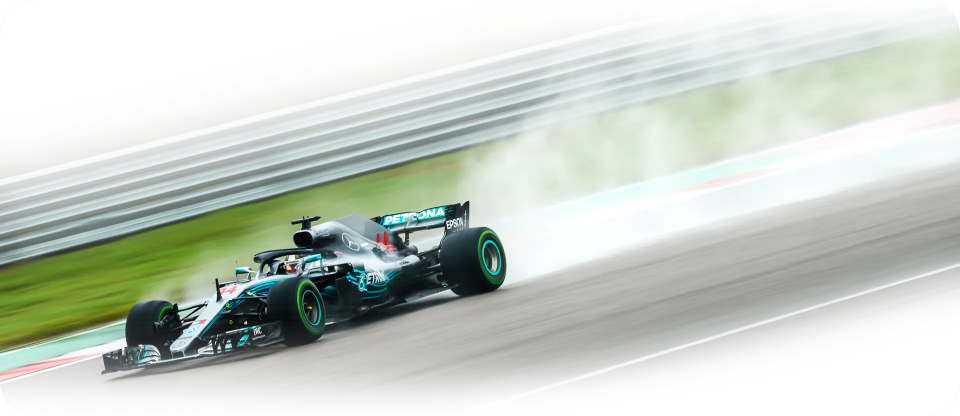
Wake of the 2018 Mercedes W09 visualized with water vapor. Photo courtesy of RIP SHAUB
Performance Overview #
On any given part of a racetrack, a race cars ability to go faster is limited by either power or grip.
A car can have near infinite horsepower, but it will be limited by the ability of the tires to produce enough tractive force to put that power to the ground. As an extreme example, imagine a racecar on ice, representing a scenario in which there is little grip available. Luckily, the Red Bull Formula 1 team has made this easier to visualize. This car is grip limited, as it is only able to deploy a fraction of its power.
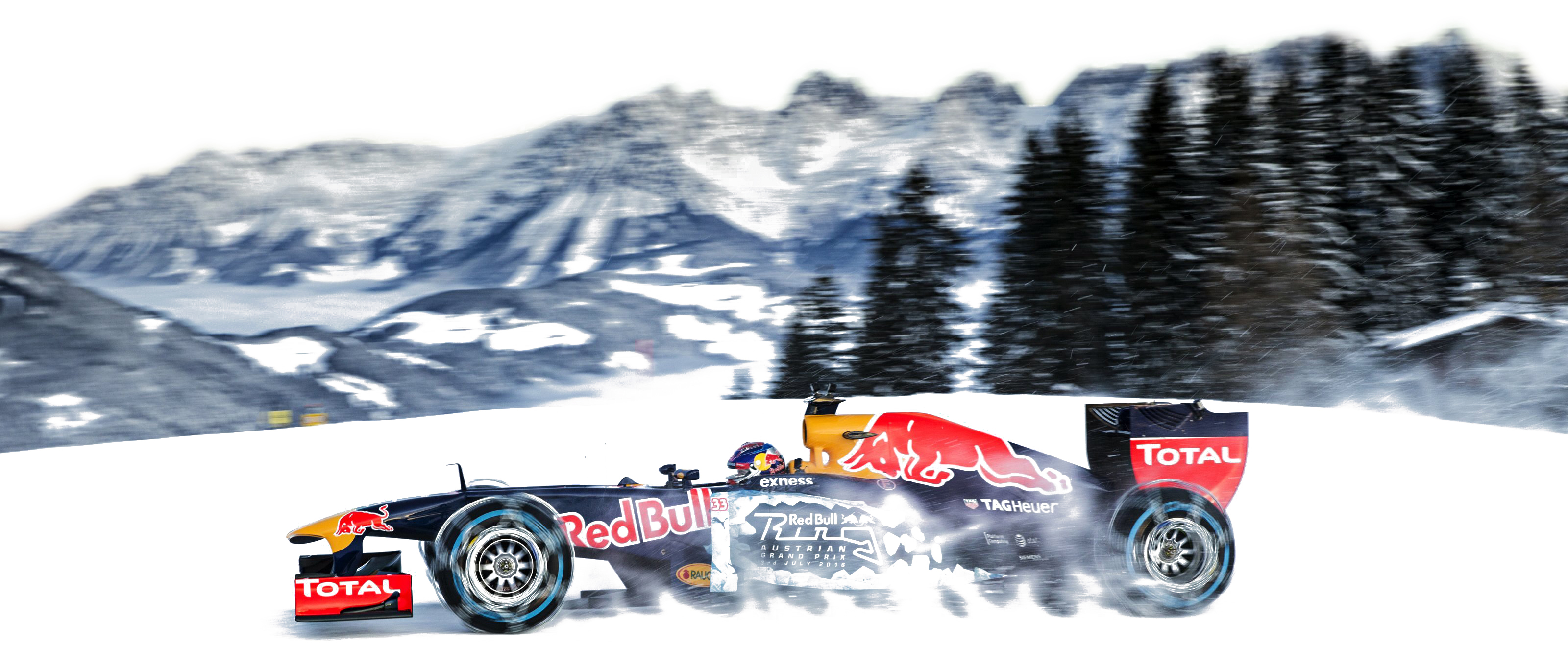
Red Bull RB7 Snow Demo. Photo courtesy of Red Bull Racing.
Alternatively, a different car that produces near infinite grip, but only has 1 horsepower, is wasting most of that traction. This car is power limited.
In short, the more power available, the more grip is needed, and the more grip available, the larger the lap time dividend paid by a further increase in power. The development of a racecar is often an iterative process.
The relative importance of power & grip vary across different track layouts, largely depending on the length of the straights and the tightness of the corners.
NASCAR CUP cars around the Daytona Tri-Oval, a course defined by its massive straights and banked corners, are primarily power limited. Drivers are able to hold the throttle wide open all the way around the 2.5 mi track.
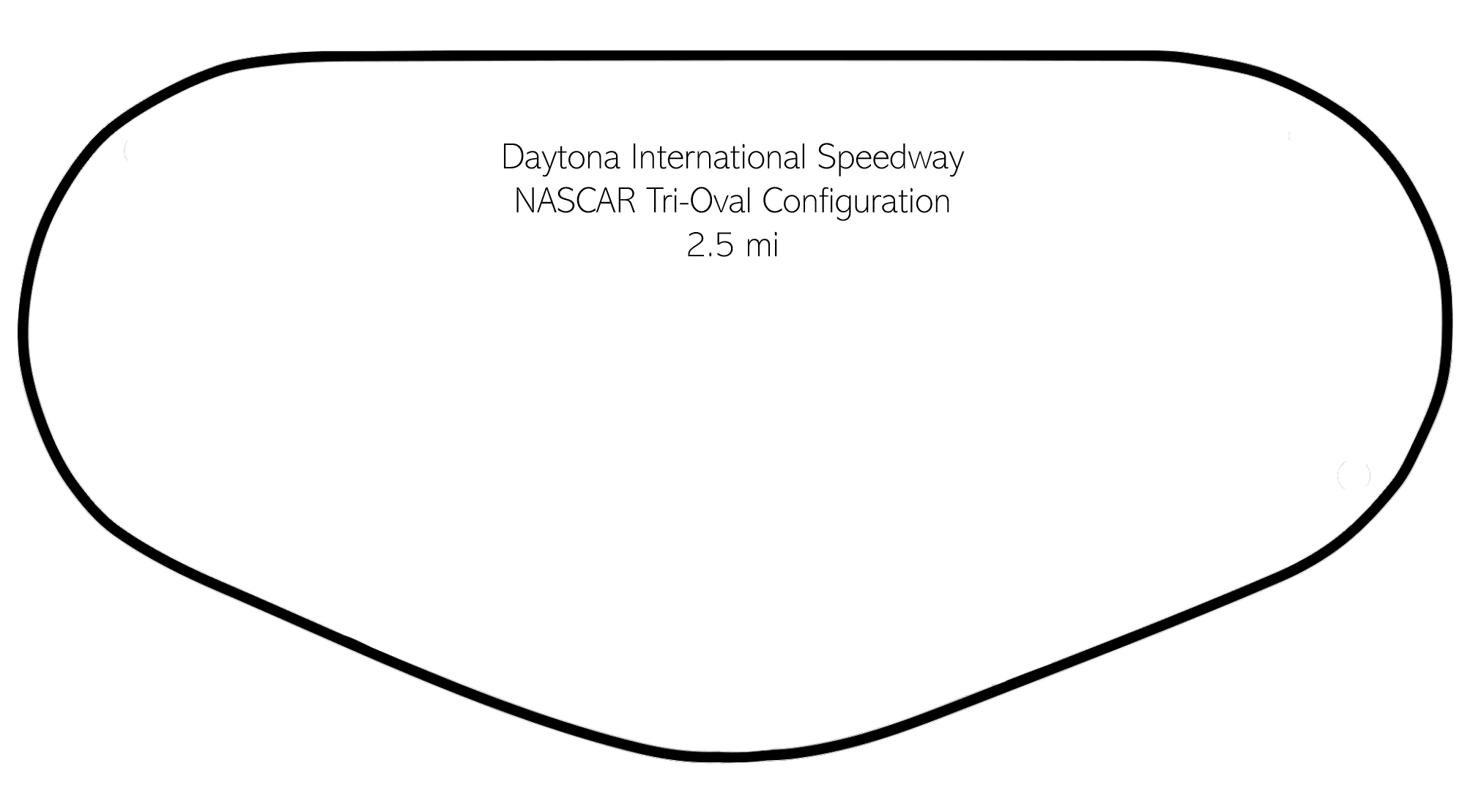
However, when the track is reconfigured for road course racing, the cars are grip limited around the tight corners.
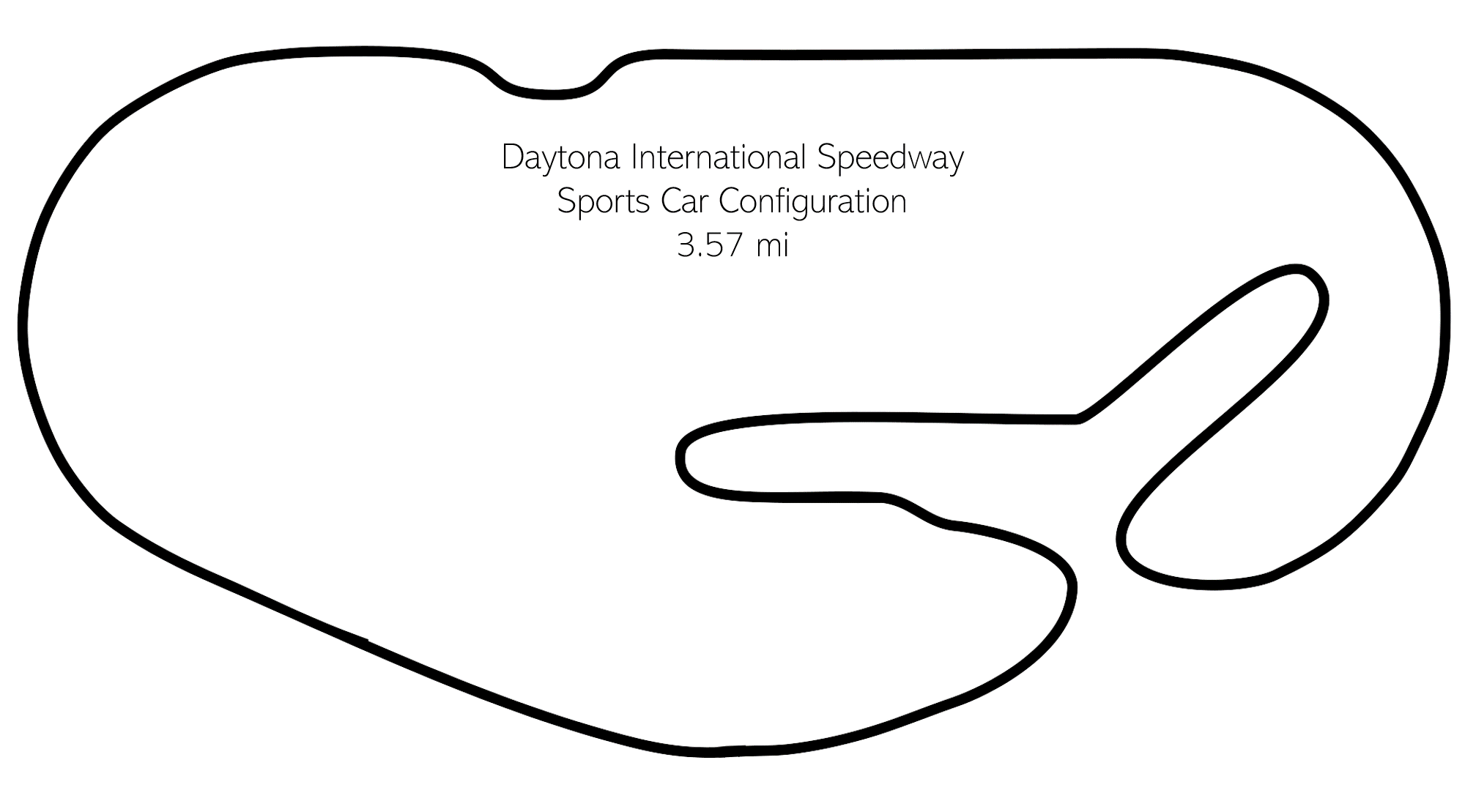
The power & grip limitations of a racecar even varies over the course of a race. A car on fresh tires has immense grip, and its ability to go faster is largely constrained by its power. However, track surfaces are abrasive, and the tires wear. As the tires wear out, the car becomes increasingly grip limited. The rate at which this happens largely depends on the construction of the track surface and the design of the tire compound.
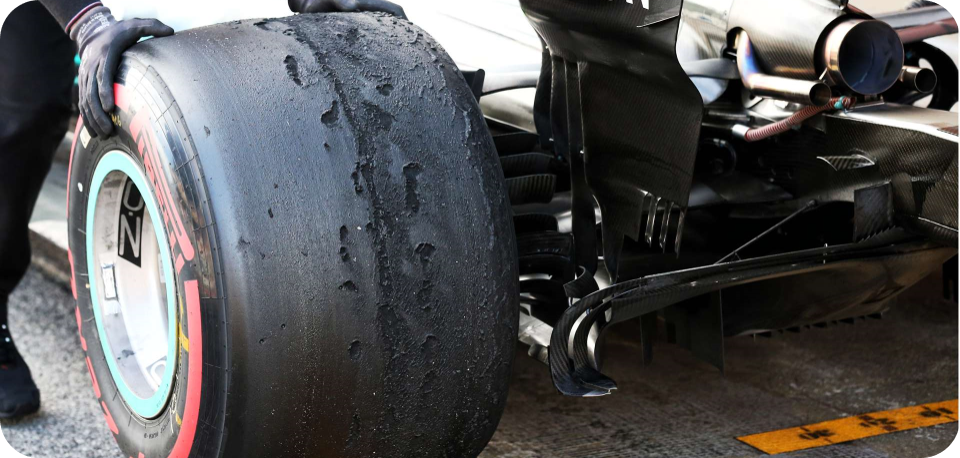
Tyre blisters on a Mercedes, Circuit de Catalunya, 2018. Image Source.
By developing the aerodynamics, the situation is entirely altered.
Forces #
There are 3 aerodynamic forces that act on the car. Each influences performance uniquely.
Drag #
Drag is a parasitic force that acts on a body in motion to arrest its movement. In a car, some of the power of the engine is always being used to overcome the force of drag, so reducing drag is effectively like making more power. However, the power needed to overcome drag is proportional to \(v^{3}\) . So, if the speed of the car doubles, 8x the horsepower is needed to overcome the force of drag at the higher speed vs. the lower. Eventually, the car reaches a speed where 100% of its power output has to be used to just overcome drag, a point called the terminal velocity.
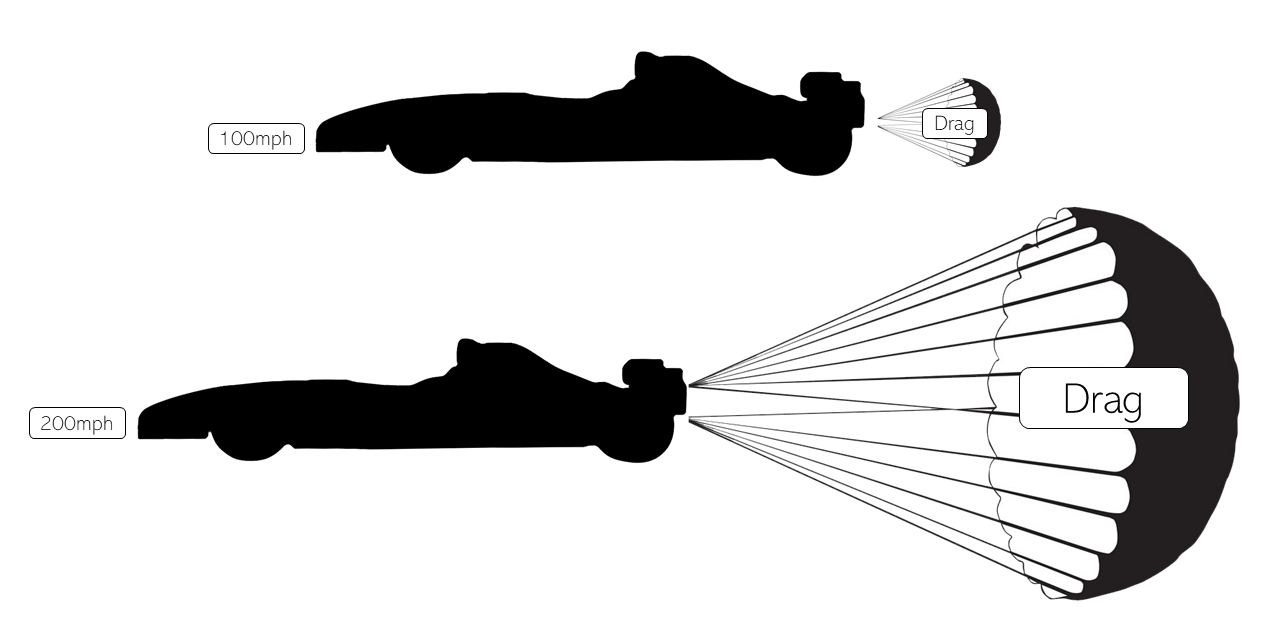
In short, increasing drag makes a car more power limited, and decreasing drag makes it less power limited.
Downforce #
A tire produces grip via two mechanisms: mechanical locking, and molecular adhesion.
These mechanisms are augmented by increasing the vertical load acting on the tire, pushing it harder into the ground. One way of doing this is to make the car heavier. However, this carries with it the stiff penalty of increasing the amount of mass that the car has to accelerate, decelerate, and move around corners. This additional inertia is often a larger penalty than the additional grip is a benefit.
However, if the cars bodywork is used to generate a downward force (or negative lift) on the tires, it increases vertical load on the tires without increasing the inertia of the vehicle (beyond the mass of the extra bodywork). Creatively, this downward force is called downforce.
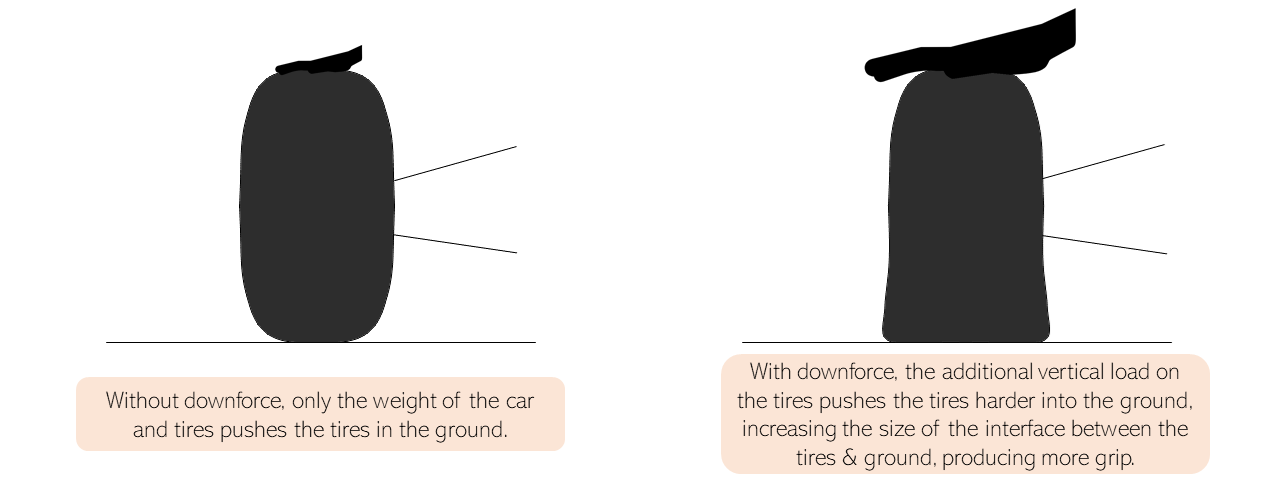
With the additional grip provided as a result of downforce, the car gains traction all around the circuit. Additionally, downforce makes a car kinder to its tires, as the increased vertical load reduces the amount of ‘slip’ a tire must undergo along the surface to produce a given lateral load.
The primary benefit to lap time is seen in cornering, but there are significant gains in braking and acceleration as well. The immense downforce produced by a modern F1 car (several times its own weight at top speed) is the primary reason they are able to brake in such remarkably short distances.

Failure
As a clearer visualization of the impact downforce has on the capability of a modern F1 car, consider what happens when downforce is suddenly removed when the bodywork fails, examples here and here.
Downforce exponentially increases with speed as it scales with the square of velocity ( \(v^{2}\) ). Put another way, a car produces 4x the downforce at 200mph that it produces at 100mph. However, this does not discount the effect of downforce at lower speeds. Over a lap, a car spends a longer percentage of time in low speed vs. high speed corners. Any improvement in slow corners reflects sizably in the lap time.
Even cars built for drag racing cars think to incorporate downforce. One would think that cars built to maximize straight line speed would only be fixated on minimizing drag (being less power limited. However, with 12,000+ horsepower, the bottleneck becomes grip, as it’s difficult to put that power to the ground off the line.
In short, downforce production helps reduce the grip limitations of a racecar.
Drag/Downforce Coupling #
The discussion has been simple so far: speed is a matter of reducing drag and increasing downforce. Unfortunately, the two parameters can’t be worked on in isolation, as drag and downforce are coupled due to a phenomenon known as induced drag. An exact explanation is beyond the scope of this article, but in short, lift and downforce do not come for free, there is always a drag penalty to pay. Certain methods of downforce production are much more efficient than others, but the trade-off usually comes at a 2:1 or 3:1 ratio.
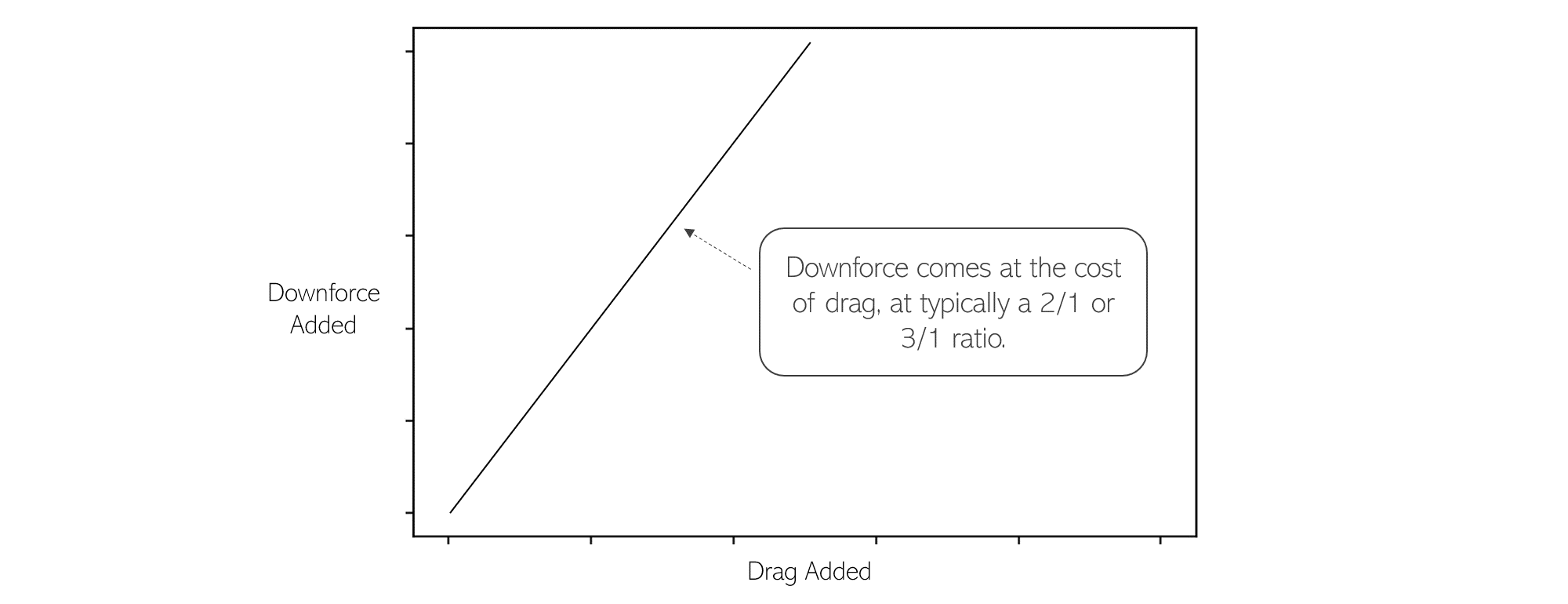
On heavily grip limited tracks, F1 cars run massive rear wings that prioritize downforce almost exclusively. However, at other tracks on the calendar, where the cars are more power limited, teams add downforce sparingly with smaller, more efficient designs.

| Point | Behavior |
|---|---|
| 1. | Red Bull RB15 - Hungary 2019 - Large rear wing designed for maximum downforce. |
| 2. | Red Bull RB15 - Monza 2019 - Smaller rear wing optimized for downforce/drag efficiency. |
Sideforce #
In review, downforce augments tire grip by pushing down harder on the tires. The tires respond by pulling the car harder into the corner, creating faster cornering speeds.

However, there is a way to cut out the tire as the middle man. If the body of the racecar is used to generate a force that pushes the car into the center of the corner, the car corners faster. This side acting force is creatively called sideforce. Sideforce, if produced in the proper direction, increases lateral acceleration without having to involve the tires.

If a car is racing primarily in one direction, like on a circle track, sideforce generation is a fairly straightforward performance generator. Higher pressure has to be built up on the outside of car relative to the inside. Even what amounts to little more than a acrylic billboard yields massive amounts of performance, as seen here.

Concluding Thoughts #
In II - Stability, the discussion turns to the various challenges presented by man and environment on the machine.
For questions or clarifications on this, or any other article, reach out to Nav@WorksAero.com.